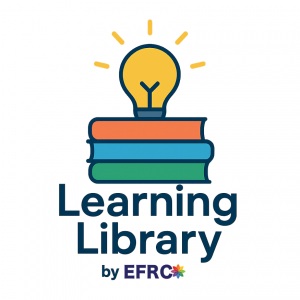If your child is having a tough time in school or preschool — like struggling to keep up, focus, communicate, or connect — you might be wondering, is there something more going on?
One powerful way to start getting answers (if your child nearly 3) is to ask for an evaluation through your child’s school district. This is how families find out if their child might qualify for special education services.
If that sounds intimidating, you’re not alone.
What Is Special Education, Really?
A lot of people picture special education as a separate class or school. But that’s not how it works for most kids.
Special education isn’t a place—it’s a set of services and supports that help a student learn.
That might look like:
- Speech or language therapy
- Extra reading or math support
- A quiet space to take tests
- Occupational therapy
- Social skills groups
What special education looks like for your child is unique to them as an individual.
Evaluation: The First Step Toward Services
Before a school can offer special education, they need to find out if a child qualifies. That’s where an evaluation comes in.
You can request one at any time, and the school must respond within a set number of days. In California, they have 15 calendar days to give you a proposed plan—or a written explanation of why they won’t move forward.
This initial evaluation is sometimes called a psychoeducational assessment and may include testing, observations, and input from teachers and families.
How to Ask for an Evaluation
You don’t need to wait for a teacher or doctor to bring it up. Parents and caregivers have the right to request an evaluation in writing. And they often do. Here’s how:
- Write a letter or email to your child’s teacher, principal, or the school district’s special education department. If you need help with how to write this email and to whom to send it given your child’s school or district, EFRC staff can assist you with that.
- Include:
- Your child’s full name, school, and grade
- A short description of your concern
- That you are requesting a comprehensive special education evaluation. There is particular wording to use, which helps ensure that the evaluation covers all the important areas. For one example of wording, see the Disability Rights California (DRC) request for assessment letter template. Even better — contact us at EFRC and we will be happy to help you clarify the particular concerns you have about your child’s experience in school, and put that into the words that IEP teams and educational administrators may best understand.
- Keep a copy of your request for your records.
What Happens After the Evaluation
If the evaluation moves forward, the school will invite you to a meeting to review the results. This meeting is part of the IEP process (Individualized Education Program).
The team usually includes:
- You (the parent or guardian)
- A general education teacher
- A special education teacher
- A school administrator
- A psychologist or specialist who helped with the assessment
You are a full and equal part of this team.
If your child qualifies for special education, together you will decide what kind of support might help them thrive.
Services Can Change Over Time
Your child’s needs might shift as they grow. That’s normal—and the system is designed to adjust.
An IEP is reviewed at least once a year. A full reevaluation happens at least every three years. Some students only need support for a few years; others may need it throughout their education. The goal is always to match the services to what your child needs right now.
What About Labels?
Some parents are hesitant to initiate the special education evaluation process because they are worried about their child receiving a label — like disability, autism, etc.
Here’s what we want you to know:
- A label does not define your child
- Without identification, your child may not get the support they need
In many ways, a label is just a tool—a key that opens the door to legal rights and individualized help. It isn’t determining your child’s path for the next 10-15 years — or as some parents worry — a lifetime. Beginning the process is about learning more about what support can help your child today.
In Summary
- You can request a school evaluation (or IEP meeting) in writing, at any time
- Special education is about support, not separation
- You’re an equal member of the decision-making team
- Services should reflect your child’s changing needs
- Getting evaluated is a step toward clarity—not a commitment to anything permanent
If you want help writing your request, preparing for a school meeting, or making sense of next steps, EFRC is here. Many of us are parents too. We’ve been there—and we’re ready to walk alongside you.








